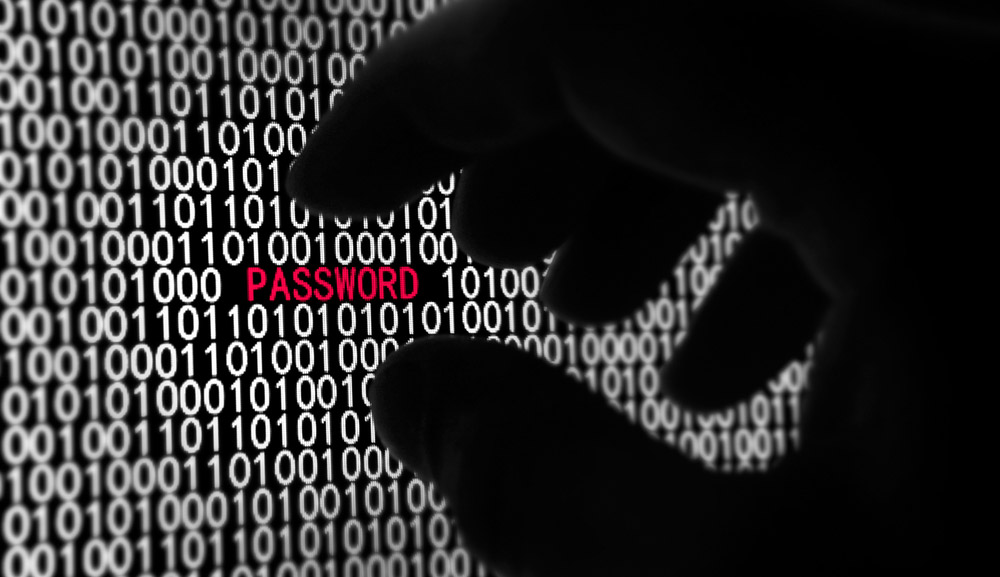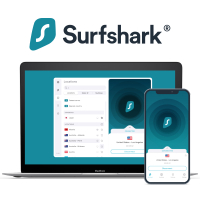It's Safer Internet Day – here are 5 tips to help you be safer online
Keep yourself safe online with these 5 tips

In the digital age we live in, online safety is as important as physical safety in the real world. Being safe online can be the thing that stands between you and a nasty virus, piece of malware, or even having your identity stolen.
With this in mind, Safer Internet Day was created. Every February 11, people share resources and education in order to raise awareness and boost everyone's overall online security.
It can be difficult to know where to start, especially if you haven't ever really considered how to improve your online safety. In aid of Safer Internet Day, and improving your online habits, read on to learn 5 tips to keep you, and your loved ones, safer online.
1. Be aware of phishing scams
This Safer Internet Day's theme is 'Too Good To Be True?', which is something to keep in mind when looking through your email, texts and even when you get a call.
Phishing scams see hackers send messages via email, text or even calling you on the phone, in order to steal your personal data, your money or even your identity. Scammers will use a number of underhand tactics in phishing scams, from offering you a free lunch to starting a relationship with you in order to steal your data and even your money.
While some of these scams rely on creating negative emotions in their victims in order to force them into acting a certain way (a psychological tactic known as social engineering), it's important to remember that fraudsters can do the same thing but with positive emotions.
It's important to always be wary of anyone offering you something but seemingly getting nothing in return, especially if all they are asking you to do is provide your personal information, click a link, or download a file. Scammers rely on victims being so tempted by the "reward" that they don't look at the bigger picture.
Here are some things to check which will help you spot phishing scams:
- The email address – the display name might look legit, but does the email address match? Does it use a different email domain than the one you're used to (e.g. a Gmail address rather than a business email address)? Are words misspelt in the email address, or are there random letters added? These are all signs that the person/organization contacting you are not who they claim to be
- Links in the email – you can check these out by hovering your cursor over any links on the email, but be careful not to click them. Do the links match the domain they're supposed to lead to? Is the address seemingly correct but the domain extension not what you'd expect (e.g. .com instead of .gov)? Are they redirecting to somewhere you wouldn't expect them to?
- The text of the email itself – is it urging you to take action, whether this is positive or negative? Is it addressed generically (e.g. 'Hello sir/miss') instead of to you personally? Does it ask you to supply personal information to the sender, e.g. full name, email address, financial details in order to get something? Are there any grammatical or spelling errors you wouldn't expect to see from an organisation?
- Any attachments – are there unspecified attachments added to the email? Have you been told you need to download software in order to open a file?
By asking these questions, you can foil phishing emails and prevent scammers from getting their hands on your data, money or spreading malware to your device.

2. Use a VPN on public Wi-Fi
A virtual private network, or VPN, is a handy online safety tool that routes your internet traffic through an encrypted tunnel, masking your IP address and encrypting your data.
Beyond being a handy tool for unlocking streaming sites or getting around tracking cookies, the best VPNs can help keep you safe online, especially if you're connected to public Wi-Fi. This is all down to the fact that VPNs encrypt your online activity, preventing anyone who may be using the public Wi-Fi to snoop on those connected to it and steal their data from doing the same to you.
In the spirit of Safer Internet Day 2025's motto, it would be remiss of me to mention that some VPNs can be "Too Good To Be True." This is seen in particular with free VPNs – you may think that you're saving some cash, but you'll end up paying in other ways. With many, your data will be collected and sold to third parties, and at worse you might end up downloading dangerous malware and not being protected at all.
It's not all doom and gloom, however, as some of the most effective VPNs are actually very affordable – for example, Surfshark costs under $2.50 per month.
The best cheap VPN: Surfshark
Surfshark is the best choice if you're looking for capable privacy protection without breaking the bank. Currently ranked at #2 on our list of best VPN services, it offers excellent speeds, superb unblocking and great cybersecurity features. Plans starting at $2.19 per month, and it even comes with a 30-day money-back guarantee so you can try it out, risk-free.
3. Install a password manager
Ah, changing your password. One of the more frustrating aspects of online safety. We all know that we should use strong, unique passwords for each account, but how many of us actually do?
I get it – it can be hard to come up with strong passwords by yourself, not to mention remembering them, but this is where password managers come in. The best password managers will not only store your passwords, but will suggest strong, unique passwords for each of your accounts. Some will even alert you if your data has been compromised in a data breach, meaning you can quickly and easily change your password if this happens.
By using strong, unique passwords for each account, you reduce the likelihood of multiple of your accounts being hacked into if your password is exposed, whether this is via a phishing scam or a data breach. Additionally, it makes your accounts harder to hack in general, as strong passwords are significantly harder for hackers to guess.

4. Don't use your real details online
If a stranger came up to you on the street and asked you for your email address in exchange for a coupon, you probably wouldn't give it to them. But how many times have you given a site your email in exchange for a discount?
Giving away your real details online in exchange for access to articles, discounts and more puts you at risk of having your data sold to third parties, or leaked in a data breach. The more your personal information is put out there, the higher the risk that it falls into the wrong hands.
Luckily, there are many ways to avoid giving out your real details. For example, Surfshark's Alternative ID and Apple's Hide My Email both generate fake details for you to use online. Alternative ID will even generate a whole fake persona for you to use online, so your real details stay completely separate from your online activities, keeping your identity and personal information safe.
If you're concerned about your data being out there on the internet, you can always use data removal service, like Incogni, to delete your data. Data removal services work by scanning data brokers on the internet for your personal information, then sending them requests to delete your data.
5. Stay away from scam sites
In-keeping with this Safer Internet Day's theme of "Too Good To Be True," it's important to recognise that some scammers rely on victims trying to uncover bargains in order to steal their personal and financial information.
Some scammers are using the draw of getting a good price on presents by setting up fake websites that offer you excellent deals that simply aren't real. These fake websites are set up in order to steal your personal and financial information.
Here are a few things to check to see if a website is fake:
- The website's URL – many fake websites will use URLs very similar to legitimate sites, but there will be spelling errors, e.g. swapping out "O" for "0." Additionally, check to see if the URL itself starts with "https://" as this is a good sign a site is real.
- The deal itself – social media can really come in handy for this, as if a brand or site is putting on a massive discount, chances are they will have posted about it somewhere. If there are no posts about it from either the brand or the site, it's likely a scam.
- The domain extension – if it's legitimate, the website will have a domain extension you recognise, like ".com." If the website uses an usual domain extension, this is a sign it's a scam.
Overall, it's better to be safe than sorry and if a deal seems too good to be true, this may mean that it is. When in doubt, try to buy things from the brand directly, or a trusted and well-known retailer, in order to avoid dodgy websites.

Olivia joined Tom's Guide in October 2023 as part of the core Tech Software team, and is currently VPN Commissioning Editor. She regularly uses VPNs to make sure they deliver what they promise, and specializes in testing VPNs with streaming sites.
You must confirm your public display name before commenting
Please logout and then login again, you will then be prompted to enter your display name.

